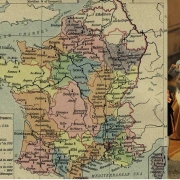Recto VRso @Vancouver, art that defies the norm and redefines how creative works are made and experienced in our digital age
Alliance Française Vancouver (AFV) celebrated its 115th anniversary with an Extended Reality (XR) art exhibition at the Centre for Digital Media in Vancouver on September 28 and 29. Recto VRso @ Vancouver featured eleven artworks and five guest artists.
XR changes the way we see artistic creation and has allowed artists to invent new forms of expressions. – AFV director Damien Hubert.
XR is simply immersive video. The user is immersed in a virtual environment delivered through a 180 or 360 degree image. XR includes all three forms of realities. Augmented Reality (AR), Virtual Reality (VR) and Mixed Reality (MR). It’s the combination of real and virtual environments interacting with computer technology and wearables.
The exhibition explores the impact of VR/AR on artistic creation, and fosters dialogue between artists, researchers and professionals from France and British Columbia (B.C.)
It also provided a glimpse of exciting future programs AFV hopes to offer in their new cultural centre. A VR tour enabled visitors to experience the new facility due for completion in 2022.

At the evening gala, B.C. Attorney General David Eby commented on the “amazing wine and art, international collaboration on technology and incredible work everyone has done.” (Nikao Media)
Levitate with Brainwaves
“The vibrancy of Vancouver’s arts and culture scene is a major benefit for our citizens,” said Deputy Mayor and Councillor Melissa De Genova. She added the city recently approved Cultural Shift, a 10-year cultural plan.
Levitation was among one of the interesting artistic and immersive journeys featured at Recto VRso @Vancouver. In this experience, the user’s brainwaves power the levitation of a simple box off the floor.
The brainwaves are transmitted via the receptors implanted in the user’s headset. A software system interprets the brainwaves, and enables the user to lift the box. Sheer concentration and practice is required.

Levitation: User donning an OVO headset (a VR & neural headset) attempts to levitate the 3D cube with his concentration exercise. The more intense his concentration, the longer the box will stay in the air. Art Creator: David Cuez and Bastien Didier. (Nikao Media)
Recto VRso is an annual event held in Laval, France. The goal is to facilitate new artistic forms engaging virtual and mixed reality technologies. Artists and researchers create works that interact between reality and virtual.
Recto VRso @Vancouver is part of the B.C. Culture Days Program and a side event to VIFF Immersed. This first-of-its-kind exhibition is organized by Alliance Française Vancouver. Supporters include the Cultural services of the French Embassy to Canada, the Consulate General of France in Vancouver, the Centre for Digital Media, Creative BC, Vancouver International Film Festival (VIFF Immersed), Emily Carr University, Institut Francais, Laval Virtual and the Vancouver VR/AR Association.

Levitation: Software displaying the user’s brainwaves used in the concentration exercise. (Nikao Media)

 © Nikao Media
© Nikao Media


 ©David Monniaux/Nikao Media
©David Monniaux/Nikao Media